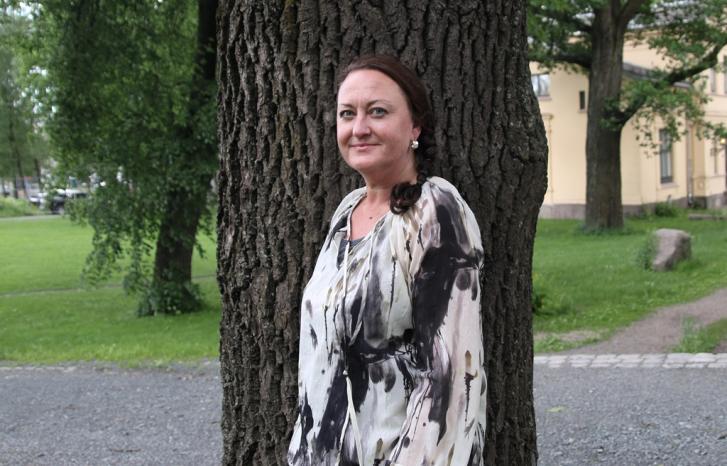Professor Knut Holtan Sørensen of the Department of Interdisciplinary Studies of Culture at the Norwegian University of Science and Technology (NTNU) has just published the book Technologies of Inclusion: Gender in the Information Society along with Wendy Faulkner of the University of Edinburgh and Els Rommes of Radboud University Nijmegen.
“The book is an attempt to shift focus. Up until now research on gender and ICT has mainly looked at how women are excluded from the field. Instead we study what needs to happen so that women are included. When do women feel it is natural, right and beneficial to use ICT? And what factors cause them to choose an education and career in ICT?” Sørensen asks.
The book takes its point of departure in a large-scale EU project (SIGIS), in which the authors played a key role along with over 20 other researchers. The project resulted in 48 studies that analysed many different strategies to get women to use and develop ICT.
Don’t look for what is lacking
He explains that much of the research previously conducted in the field has been based on a deficit perspective, meaning that women, ICT technology or the ICT environment has been seen as lacking something and that this excludes women as active ICT users and developers.
“We can take the recruitment of women to study programmes in computer and information science as an example. Those who take a deficit perspective think that women lack the expertise or adequate motivation to study ICT or that the study programme and study environment does not appeal to or suit women. To remedy this problem, information campaigns are launched to motivate all women and to show that the study programme ‘fits for them’. These campaigns usually have a limited effect, partly because they target all women and not those who potentially could have been recruited.”
One of the studies under the SIGIS project, headed by Vivian A. Lagesen, looked at NTNU’s Women and Computers Project, a large-scale initiative to increase the percentage of women enrolled in study programmes in computer science, communication technology and information science. The Women and Computers Project began in 1997 with a number of different measures. The initiative helped to increase the proportion of women from 6 percent to 38 percent in one year and was later made permanent. The initiative has now changed its name to the Women’s Project Ada and includes all the study programmes under the Faculty of Information Technology, Mathematics and Electrical Engineering.
“Even though the Women and Computers Project was very successful, we aren’t convinced that the information campaigns they used in the beginning were the most appropriate,” says Sørensen.
The idea behind the campaigns was to make study programmes in computer and information technology attractive to women by redefining the discipline. They described ICT as “feminine” and non-technical instead of “masculine” and technical. An information brochure stated that women draw circles whereas men draw squares, and that NTNU wanted more ICT students who draw circles.
Like mathematics and technology
Interviews with women studying computer and information technology showed that they did not appreciate the stereotypes used in the information material. They wanted to be valued for their individual qualities and did not think that men and women are so different. They did, however, perceive the campaigns as a strong signal that they were welcome.
“Women who choose to study ICT often like mathematics and technology as a starting point. Then it’s not necessary to try to change the idea of what the field is all about. In our book we advise against using strategies that build on gender stereotypes, such as strategies based on the belief that women only want to work with people and think that technology is intimidating,” says Sørensen.
Computers are fun
Another persistent idea is that girls and women don’t think computers are fun.
“But even though many girls and women might not think that computers per se are cool, in reality they have a lot of fun by using ICT. Many things in the life of a modern young woman, like downloading music and videos, chatting, being on Facebook, talking to friends and the like, would not be possible without ICT. From an inclusion perspective, this is why it can be beneficial to show how this technology is useful, interesting and entertaining in daily life. This can increase girls’ and women’s interest in computers,” says the professor.

Fun was a keyword in the British initiative IT Beat, which organized a web design competition for girls from 11 to 15 years of age. The girls created a fan page for their favourite bands, and in the process they got support and training in how to design webpages. A total of 250 participants were awarded tickets to an enormous sleepover party, which was held in London’s Science Museum in 2003. The main attraction was a pop concert, and the girls also met potential role models in what the organizers described as glamorous ICT women. By linking technology to the girls’ interest in pop music, the organizers generated great enthusiasm among the girls.
Money and career
“One of the main points in the book is that we are concerned with what motivates women, not what scares them away,” explains Sørensen.
“For instance, the interviews with NTNU’s female students in computer and information technology showed that it is effective to focus on what they get in return for studying ICT in terms of their career. Many of them, for example, were enticed by the idea of earning a better income than their fathers.”
“A good strategy is also to show that there are women who study and work with ICT. At the same time, the numbers in themselves are important. If there are enough women who study ICT, the environment will be less male-dominated, and this in turn will encourage more women to apply for the programmes.”
Measures that work together
The Women and Computers Project was so successful in reaching women because NTNU launched a number of measures that worked together. In addition to the information campaigns, they introduced gender quotas, cooperation with upper secondary schools and Women’s Day – in which NTNU presented its programmes to potential female students. They created a new computer lab just for women and arranged various courses for female students. They also hired teaching assistants to create a sense of well-being and a good environment by organizing social gatherings and inviting women who worked in the ICT industry to hold presentations.
In total, these measures were designed to strengthen the women’s motivation to study ICT, ensure them good access to computers, increase their ICT expertise and support them both socially and in their studies.
“They created what we in the book call ‘positive circles of inclusion’, in which the overall effect of the measures is greater than the sum of each individual measure,” says Sørensen.
In their book he and his colleagues developed a theory of how one can “do” inclusion. Positive circles of inclusion is one of the recommended strategies. Another deals with design methods and how ICT designers can develop a more nuanced perspective on gender.
Avoid generalizations about gender
“Today many gender stereotypes are used as the basis for technology design. Many efforts to include women are driven by commercial considerations – companies want to reach more women – but it is still common to market products as if they were made for ‘all women’ or ‘all men’. This works only to a certain extent,” says Sørensen.
He points out that there is also a tendency to develop public policy and inclusion measures on the basis of gender stereotypes.
“The problem is that generalizations like these are self-fulfilling. If everyone ‘knows’ that girls don’t like computers, then they will also believe that they don’t like computers.”
“Instead the starting point should be in different types of groups, not just in the divide between women and men. It’s important to be concrete and specific, and not generalize too much about qualities. Women are different and men are different, and often the differences between people of the same gender are more interesting and meaningful than the differences between the genders,” Sørensen emphasizes.
The authors argue that sometimes it can be smart to “forget” gender.
“This is a crucial dilemma for gender research. On the one hand, it is important to uncover problematic gender-based inequalities. On the other hand, a strong focus on gender can confirm beliefs that gender should be important and therefore contribute to maintaining gender-based inequalities.”
“The sad fact is that gender is easy to use as a sorting mechanism, such as in quantitative studies, and this can result in too much focus on gender differences. This is unfortunate,” says Sørensen.
Translated by Connie Stultz
Knut Holtan Sørensen is a professor in the Department of Interdisciplinary Studies of Culture at the Norwegian University of Science and Technology (NTNU).
He is one of three authors of the book Technologies of Inclusion: Gender in the Information Society, which is based on the large-scale EU- funded project Strategies of Inclusion: Gender in the Information Society (SIGIS).



